Examining China's hypersonic transport plans
 China Science Press
China Science PressChinese researchers have presented a new design concept for a hypersonic aircraft, which they say is a big step towards one day flying from Beijing to New York in just a few hours.
Which would no doubt be a speedier and perhaps more convenient option than the current 14 hours.
Research into hypersonic flight itself is nothing new, but it usually focuses on military applications where there is more money for research and less pressure to break even.
So will flights five times the speed of sound ever make commercial sense, and carry passengers in two hours across the Pacific?
 Getty Images
Getty ImagesFast, faster, fastest
When it comes to measuring aircraft going really fast the benchmark used is the speed of sound or Mach 1, around 1,235km/h (767mph).
- Subsonic - anything below the speed of sound; such as current passenger airliners
- Supersonic - faster than Mach 1 and up to Mach 5 (five times the speed of sound); such as Concorde, which flew between Europe and the US from 1976 until its retirement in 2003
- Hypersonic - anything faster than Mach 5; currently just small experimental vehicles
Hypersonic is what the Chinese research is focusing on, with a team at the Chinese Academy of Sciences looking at one of the two big challenges; the aerodynamics, and the engine, which is much harder to solve.
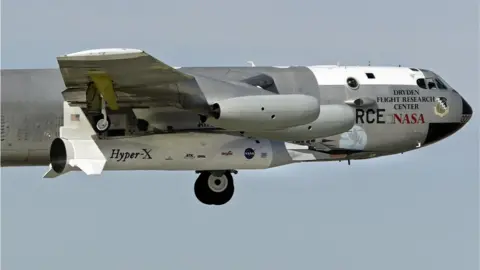 Getty Images
Getty ImagesIn terms of design, hypersonic flight requires something that can minimise drag, that is the resistance to motion from the air; the faster the aircraft, the more drag becomes an issue.
"It goes approximately as velocity squared: if you double velocity, you quadruple the drag," explains professor Nicholas Hutchins of the University of Melbourne.
What's new about the design proposed and tested in China is a second layer of wings attached above the usual wings, in order to reduce drag; it's a little similar to a biplane.
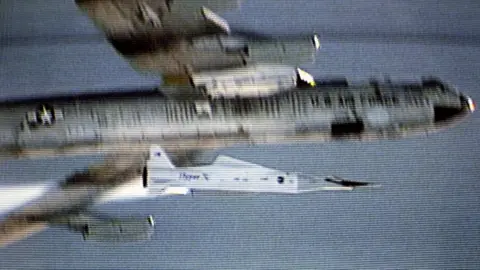 NASA
NASAAt the moment the developers have only tested a scaled down model in a wind tunnel.
So the project is still far from, quite literally, taking off.
Getting to Mach 5
Even if a design manages to cut down on drag, there are still other challenges that remain.
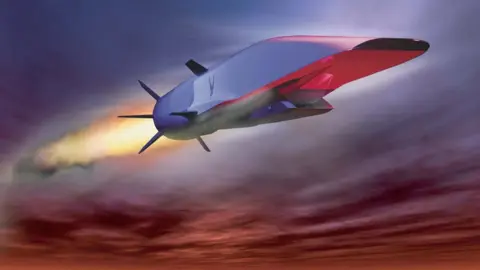 USAF
USAFHeat resistance is one, for instance. But then there's also the not inconsiderable issue of the sonic boom.
If a plane breaks the speed of sound, it generates shockwaves. In simple terms that's a really loud bang. So loud it can shatter glass.
The engine is the more tricky bit when it comes to getting a future hypersonic aircraft airborne.
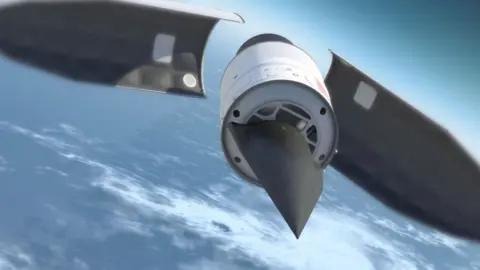 Darpa
DarpaOnce a vehicle has reached Mach 5, it can be propelled by a so-called scramjet engine: an air-breathing jet engine that sucks in air and uses that to burn its fuel.
But, and it's a big but, this type of engine only works from Mach 5 onwards, so it requires another jet engine to get the aircraft going this fast in the first place.
That could be an extremely powerful, traditional jet engine but eventually some combination of the two would be needed, say experts.
"There's been a major programme going on in China over the last couple of years to basically design that engine," explains professor Michael Smart, chair of hypersonic propulsion at the University of Queensland.
"That's what would be the real breakthrough."
Commercially viable?
Aside from technical advances and possible landmark moments, the question is of course whether there's ever going to be a commercial market for hypersonic flights.
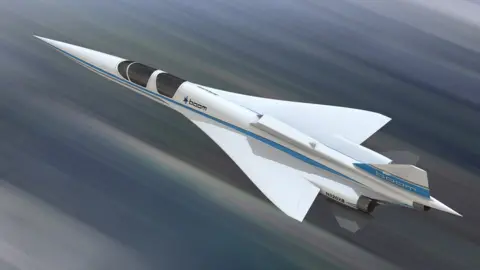 Boom
BoomSteal a quick glance at Concorde and you might have your doubts. The supersonic Anglo-French jet was hailed as the future of air travel when it first flew in 1969, but few were ever built, and it was eventually axed in 2003 with no sign of a successor.
For one thing, the flights were too expensive for most travellers. And remember the sonic boom? Well that meant Concorde was only allowed to fly faster than sound once over the ocean.
This restricted routes to trips across the Atlantic, and hence hurt its commercial viability.
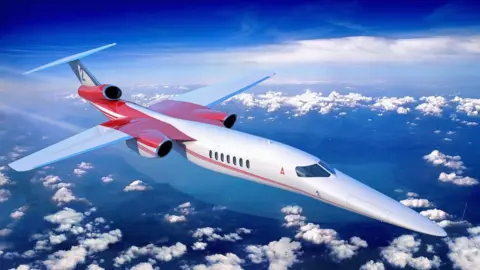 Aerion
AerionSo although recent years have seen renewed interest in supersonic airliners, it's all still at development stage.
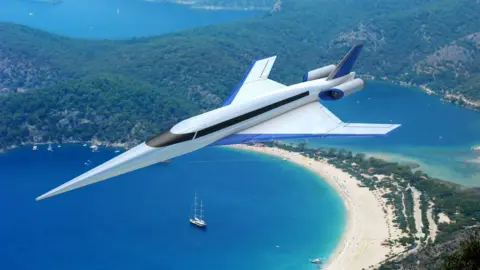 Spike
SpikeChallenges would be even bigger with hypersonic flights. They'd be even more expensive and also cause a sonic boom.
The research paper published in the February edition of Physics, Mechanics & Astronomy boldly assumes that in the future, hypersonic flights will be "more convenient and efficient" than getting on board a conventional plane.
But it is "at least 15 to 20 years" before any such plans could be commercially viable, says Ellis Taylor of Flight Global.
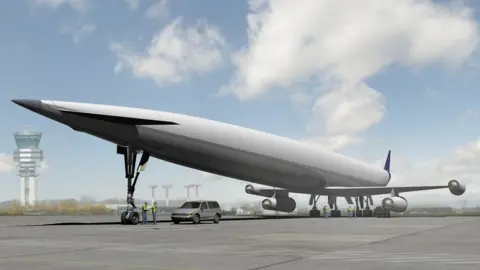 Reaction Engines
Reaction Engines"It's hard to see a market for this at the moment," he says.
"Historically in fact, air fares have been going down rather than up and it would be hard to get a wider clientele for a hypersonic flight.
"It would be a very, very niche thing - and that of course significantly upsets the economics of a commercial service."
Military competition
According to Chinese media reports, the scientists behind the research are also involved in Beijing's military projects around hypersonic speed, and it is defence that lies at the heart of hypersonic ambition.
Think of aerial surveillance for instance that could be deployed very quickly, and would be hard to intercept.

Or perhaps hypersonic missiles that could render existing defence systems useless.
The big players on that stage are the US, China and to some extent also Russia.
Unsurprisingly, military research is a lot more secretive and it's hard to say who has the edge.
"Historically, the US has always been in the lead, but China is catching up very quickly," says Prof Smart.
So the plans for a commercial hypersonic jet, even if they are at the early stages, are a bold marker leaving little doubt over China's ambition.
